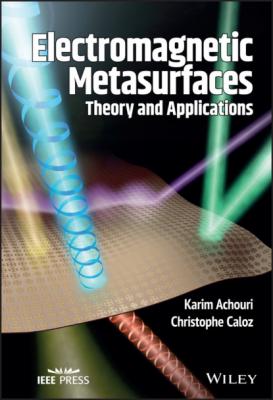Electromagnetic Metasurfaces. Christophe Caloz
Читать онлайн.| Название | Electromagnetic Metasurfaces |
|---|---|
| Автор произведения | Christophe Caloz |
| Жанр | Физика |
| Серия | |
| Издательство | Физика |
| Год выпуска | 0 |
| isbn | 9781119525172 |
alt="StartLayout 1st Row 1st Column negative bold-script upper E dot StartFraction partial-differential bold-script upper D Over partial-differential t EndFraction 2nd Column equals minus one half bold-script upper E dot StartFraction partial-differential Over partial-differential t EndFraction left-parenthesis epsilon 0 bold-script upper E right-parenthesis minus one half bold-script upper E dot StartFraction partial-differential Over partial-differential t EndFraction bold-script upper P minus one half StartFraction partial-differential Over partial-differential t EndFraction bold-script upper E dot left-parenthesis epsilon 0 bold-script upper E right-parenthesis minus one half StartFraction partial-differential Over partial-differential t EndFraction left-parenthesis bold-script upper E dot bold-script upper P right-parenthesis 2nd Row 1st Column Blank 2nd Column minus one half bold-script upper E dot StartFraction partial-differential Over partial-differential t EndFraction bold-script upper P plus one half bold-script upper P dot StartFraction partial-differential Over partial-differential t EndFraction bold-script upper E comma EndLayout"/>
Grouping the first two, middle two, and last two terms of the right-hand side reformulates this relation as
(2.61)
which, using again
(2.62)
Finally, grouping the first two terms of the right-hand side of this relation yields
(2.63)
Similarly, the term
(2.64)
Substituting now (2.63) and (2.64) into (2.57) finally yields the bianisotropic Poynting theorem:
(2.65)
where
(2.66a)
(2.66b)
(2.66c)
(2.66d)
(2.66e)
